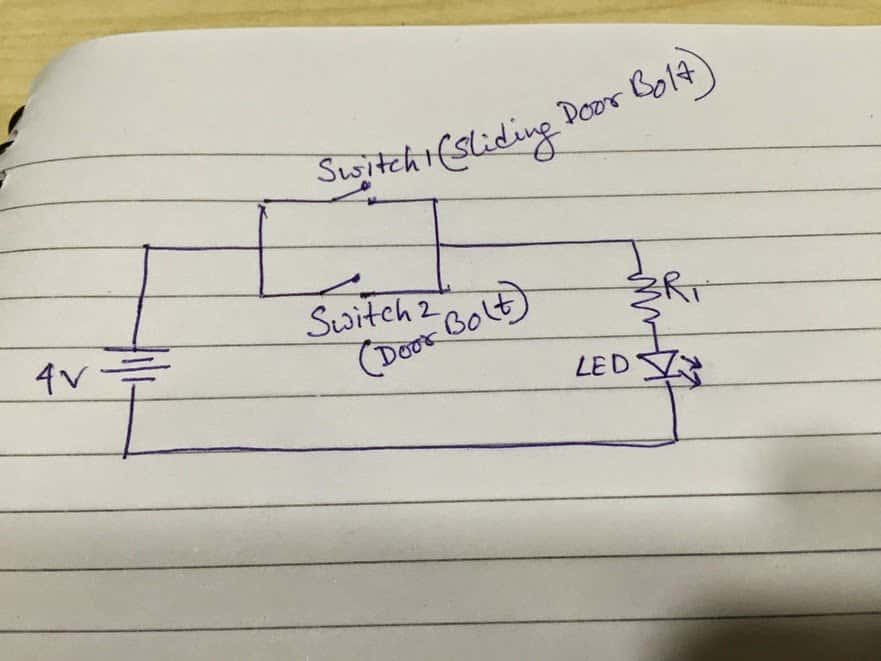In this post I have explained a very simple automatic bathroom/Toilet Engage indicator circuit which can be installed with any relevant door bolt for implementing the actions. The idea was created and submitted by Mr. Sandipan.
The Design
I have one more idea that need your help. I would like to implement is at my home ( just a simple useful fun ).
Here is my idea :
Automatic Bathroom/Toilet Engage indicator :
Requirements :
1. If a bathroom/toilet is engaged/ locked from inside ( in use ), a LED indicator ( Placed outside) should glow.
2. If the bathroom/toilet is locked from outside ( Not in use ), the indicator should not glow.
3. The bathroom/Toilet can be locked from inside using one Sliding door bolt or simple door bolt or both.
Based on the above requirement, I designed a very simple Circuit using one LED, 2 AA battery and use door locks as switch. Here is the circuit diagram
Circuit Diagram


So, if any bolt or both bolt are used from inside, it complete the circuit and LED will glow.
The problem is, a lot of wiring is visible in back side of the door. I have tested this circuit using breadboard but not with Bathroom/Toilet door 🙁 .Could you please suggest any other sensor based idea/circuit ?
Thanks
Sandipan
Can you pls make circuit diagram for washroom occupancy indicator using reed switch. ????
Can you briefly explain how the reed switch should sense the occupancy?
Sir, sorry for disturbing you. Im afiqul. Im student in UITM melaka. Can you give any schematic diagram related with toilet autolock system? I must find that schematic in this week. So i need your help sir. Thats all. Thank you sir
Hi Afiqul, please provide some more information regarding the functioning details of the lock, so that I can get a better idea
I built a power bank using 6V,4.5Ah battery.
When i Connect a cellphone for charging My phone shows that it is charging but phones battery level is not increasing instead if i run some online games while charging with it phones battery level is decreasing.
I used 7805 IC and Two capasitor to establish a 5Volt,1A current.
When I measure output voltage and current it is fine….but when i measure it while charging a mobile phone it shows output voltage 4.1V
what should i fix now
Sorry for grammatical mistake.
The 7805 IC circuit may not be required, just connect the battery output with the phone through a 1N5408 diode….
you should not use the phone while it's being charged because the charging rate is always slower than the consumption rate, and therefore it could prevent the phone from getting charged properly.
and make sure your 6V battery is fully charged while implementing the above
6v battey fully charged means the o/p value maximum 6.50v….
While using diode ..the o/p will be above 6v.only,, diode will block ampere and little bit voltage drop… …
Exact 5v shall i use resistor….or any other idea sir…
For 6v 4.5Ah battery..
For using travelling purpose sir..
My mobile charger output 5v,1.5Ampere…
Guide me sir….
yes you can use a resistor, if the diode doesn't work….5V is not critical for phone charging…6V can be also used.